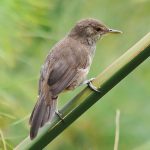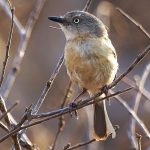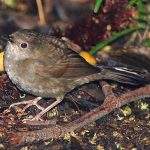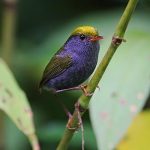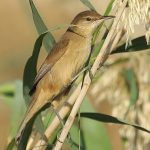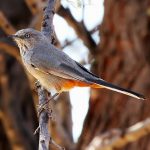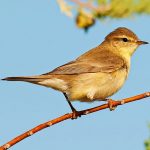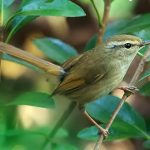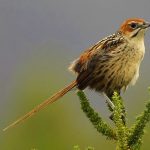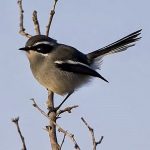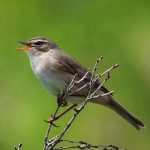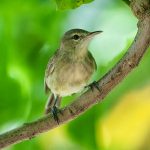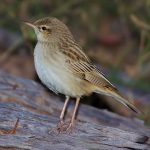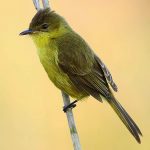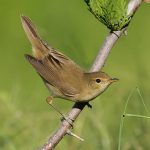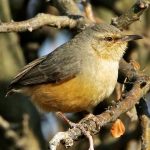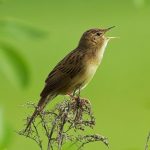Millerbird
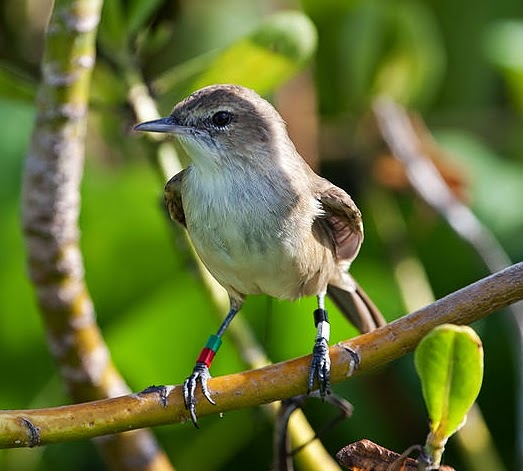
 |
| Photo by R. Kohley (Wikipedia) |
Common name:
millerbird (en); felosa-do-Hawai (pt); rousserolle obscure (fr); carricero hawaiano (es); Hawaii-rohrsänger (de)
Taxonomy:
Order Passeriformes
Family Sylviidae
Range:
This species is endemic to the steep, rocky island of Nihoa in the north-western Hawaiian Islands.
Size:
These birds are 13 cm long ad weigh 15-21,5 g.
Habitat:
The millerbird is found in dense, moist scrublands, particularly around Sida fallax, Solanum nelsonii and Chenopodium oahuense.
Diet:
They feed on various small arthropods, including beetles, caterpillars and moths, spiders, roaches, ants, bugs, grasshoppers, flies and pseudoscorpions.
Breeding:
Millerbirds breed in January-September. the nest is built by both sexes, consisting of a deep cup placed among dense scrubs. The female lays 2 eggs which are incubated by both parents for 14-17 days. The chicks fledge about 14 days after hatching.
Conservation:
IUCN status – CR (Critically Endangered)
This species has an extremely small breeding range and a global population estimated at 250-1.000 individuals. Existing data does suggest that millerbird numbers on Nihoa have experienced pronounced fluctuations and have likely ranged between fewer than 50 and more than 800 individuals. The species is suffering extensive and strikingly low levels of genetic diversity as a result of recent severe bottlenecks caused by climatic events, anthropogenic influences and the introduction of exotic mammals, plants and insects. There was also a population on the island of Laysan, which became extinct in the early 20th century due to the introduction of rabbits and livestock, which denuded the island of vegetation. Severe weather events, diseases and the effect of grasshopper outbreaks on the island’s vegetation are all relevant threats for the millerbird. At present, access to Nihoa is strictly controlled to avoid the accidental introduction of new species via seeds, eggs or arthropods travelling on clothes and equipment. A translocation programme is currently in progress with first birds having been released in Laysan in 2011 and having bread successfully.



